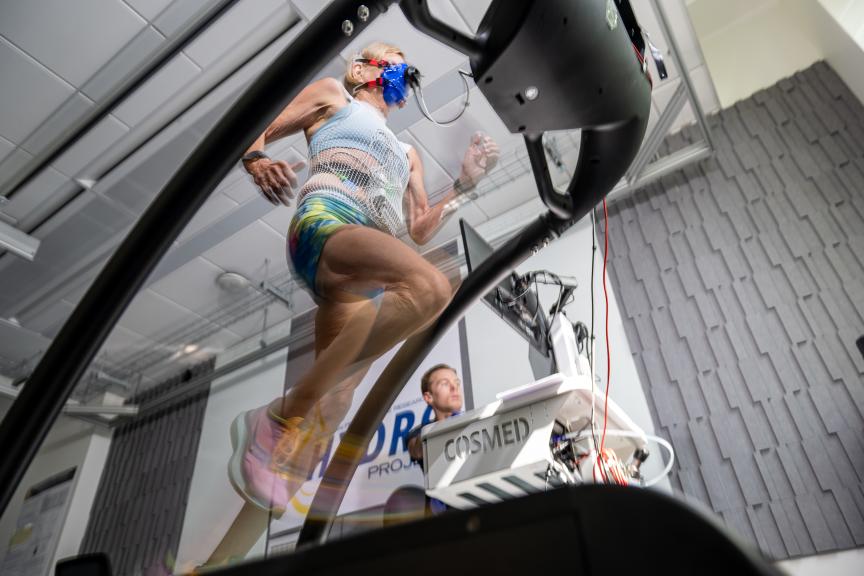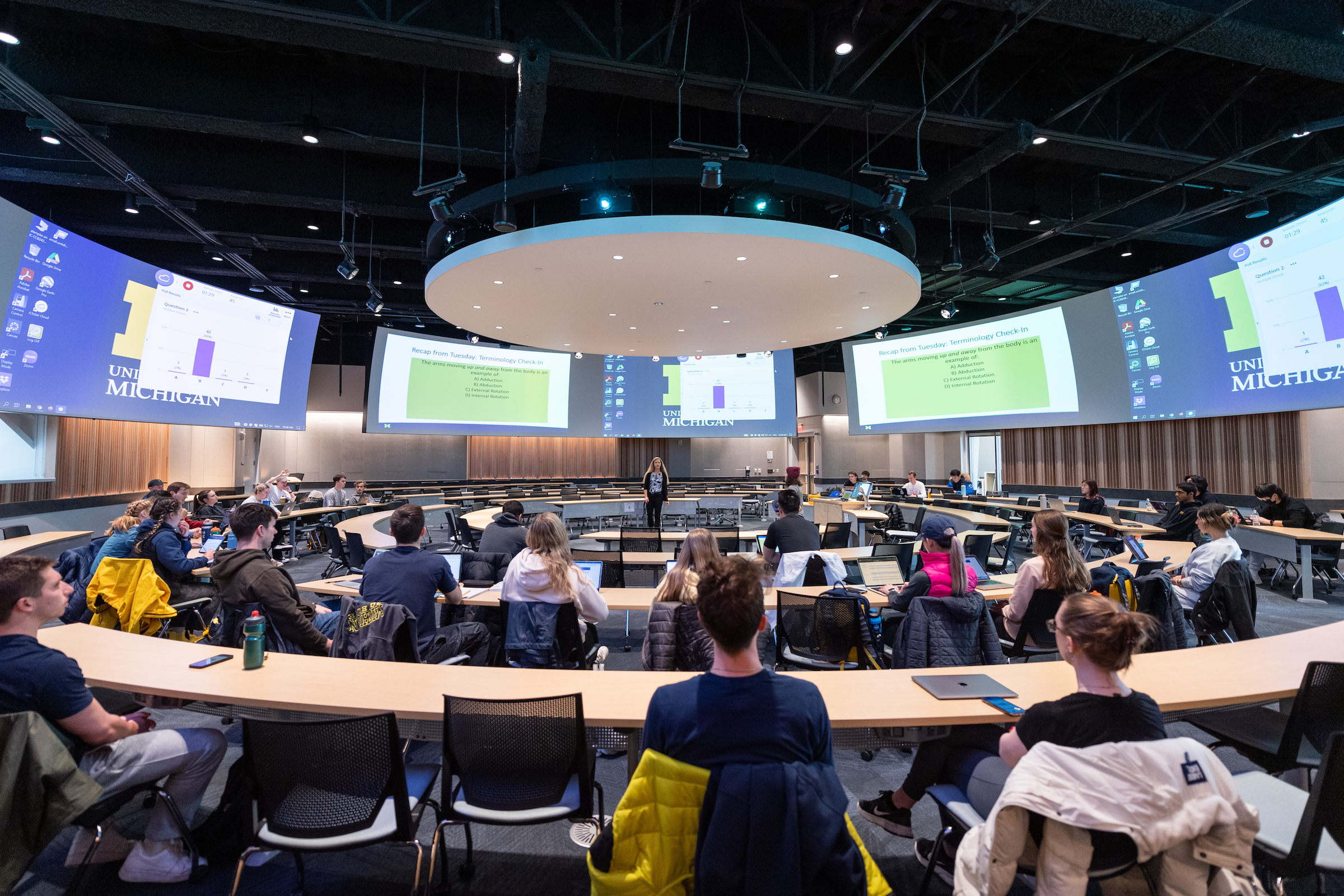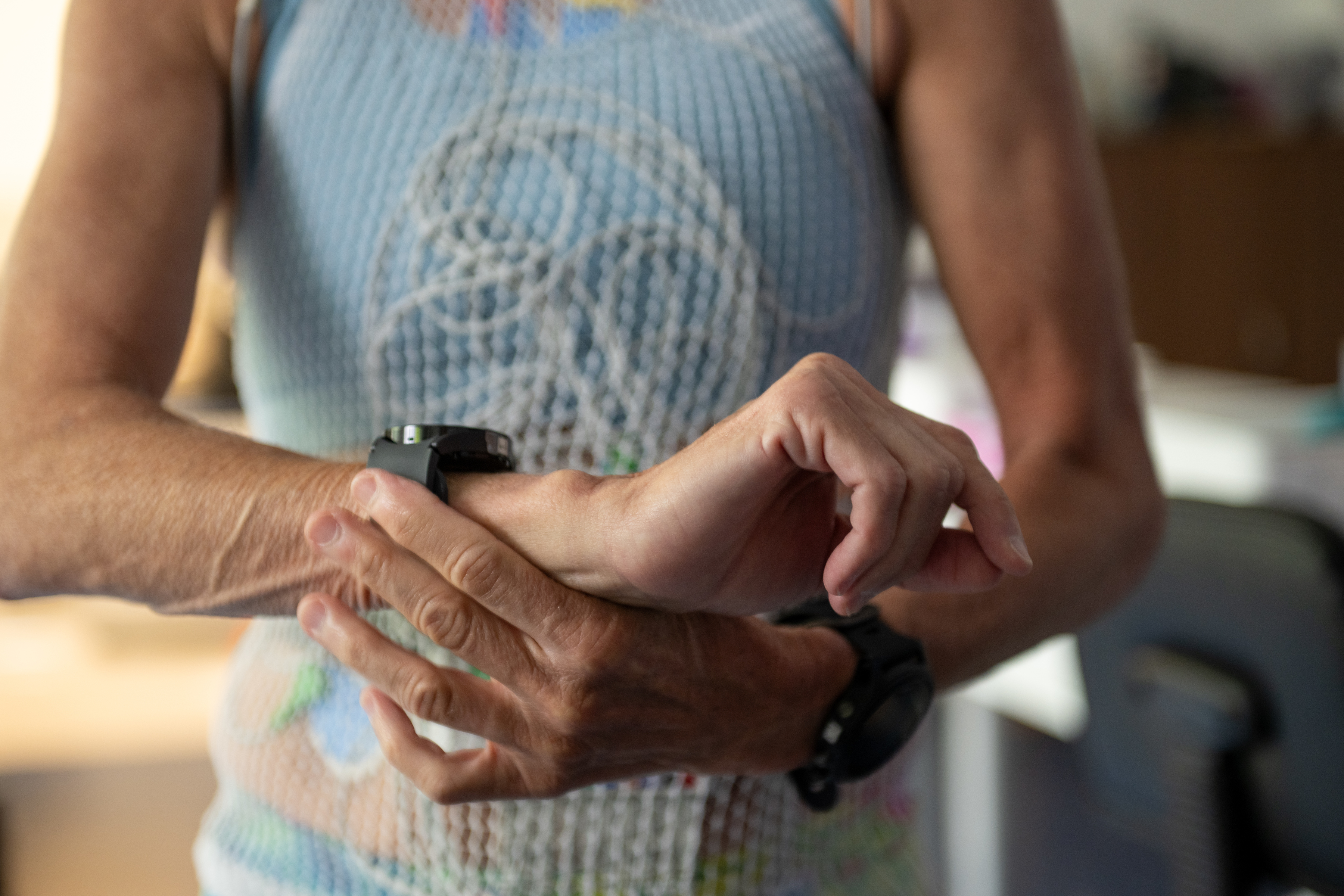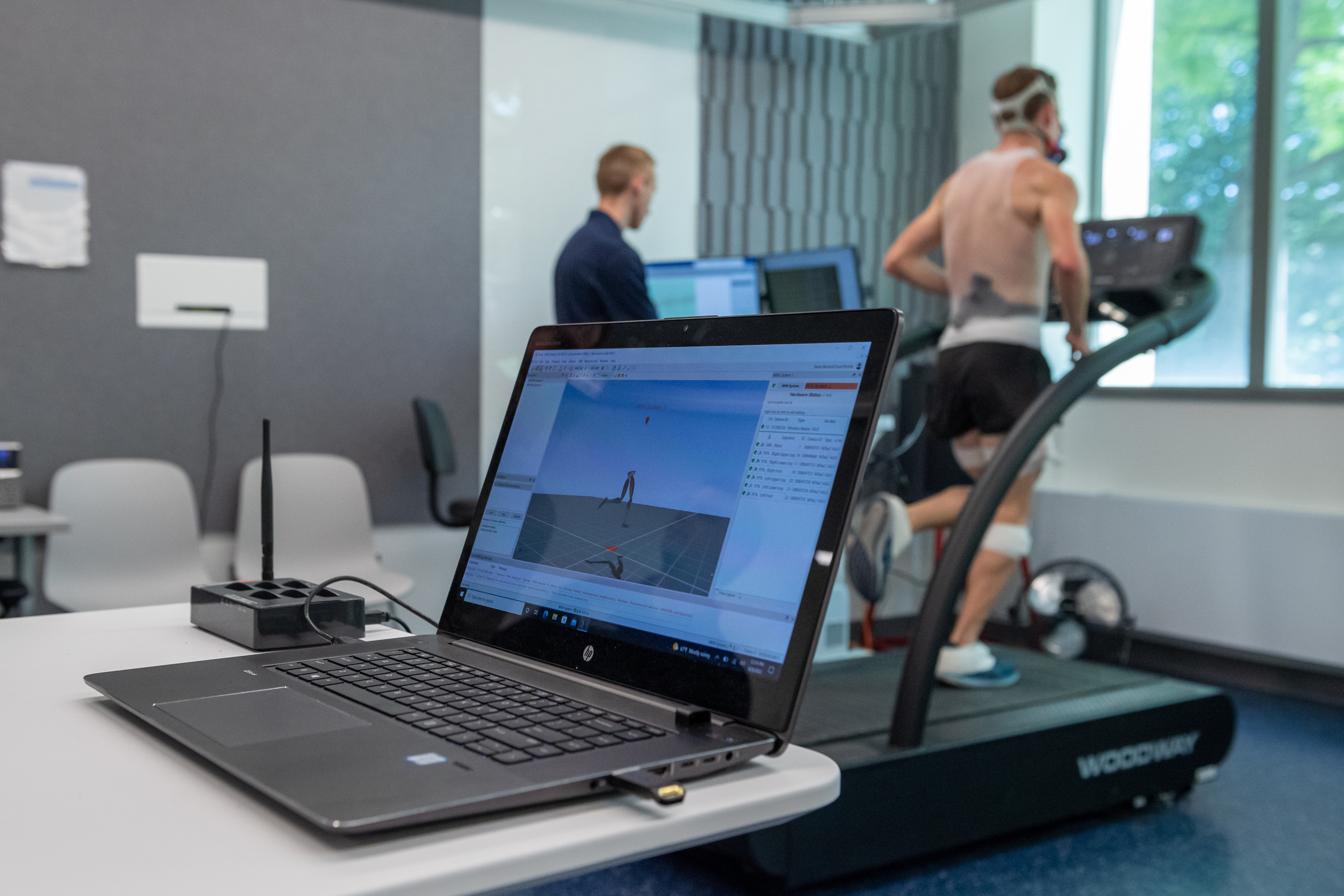
 Back to News
Back to News
The evolution of ESSI

Lines of sweat crest Nathan*’s face as the high-end treadmill below him speeds up for the fourth time. He breathes heavily, trying to take in as much oxygen as possible despite the Mad Max-like mask strapped to his face. For a few seconds, he scans the Samsung Galaxy watch on his wrist. At a 5:43 mile pace, he’s close to reaching maximal exertion, when the lactic acid produced by his screaming muscles will collect faster than he can break it down.
But the effort is worth it. The testing Nathan is participating in through the Michigan Performance Research Laboratory (MiPR, the Exercise & Sport Science Initiative’s core lab) will provide data to improve the sweat loss algorithms on Samsung’s watches. And the report he receives at the end of each research session, chronicling everything from heart rate and stride length to bone density and V02 consumption, will provide valuable training information for him as an elite runner.
“The goal of our research with wearable technology is: How can we give the consumer more information?” says Adam Lepley, the co-director of MiPR and a clinical associate professor at the School of Kinesiology. “And how do we let them use it in a more effective or efficient way?”
Advancing and sharing knowledge of exercise and sport science has always been the purpose of MiPR and its umbrella group. But their specific strategies have crystallized since moving their home base to SoK in early 2022.
Since then, the Exercise & Sport Science Initiative (ESSI) has added introductory courses on sport and human performance for U-M students as well as webinars for the broader public. MiPR has cemented its status as a leading player in wearable technology research. ESSI’s next goal: to create a home for campus researchers who’d like to incorporate human performance and data analytics into their work.
“We’ve had lots of aspirations,” says Ron Zernicke, the co-director of ESSI and a dean emeritus of SoK. “Many of them are beginning to bloom and come to fruition.”
Expanding education

Before 2022, ESSI was based in the Office of the Vice President for Research at U-M and, thus, its focus was research. Once ESSI transitioned to SoK, Dean Lori Ploutz-Snyder was eager to add an emphasis on education as well. She suggested that elective courses made available to all students on campus could improve student wellness knowledge and further ESSI’s mission.
“We said, ‘Hallelujah, that aligns precisely with our vision,’” Zernicke says.
ESSI hired clinical assistant professor Alexandra DeJong Lempke to develop its educational arm. Her first course, “Topics in Human Performance,” launched in the winter 2023 term.
Seventy-five students learned about basic human
performance concepts through lectures, guest speaker
presentations, and dynamic activities — all informed by
elements of the research done in the MiPR lab.
In a post-course survey, several students said it was
the best class they’d ever taken.
“Because kinesiology is the study of human movement,
we do have the liberty to do more physical actions
during classes, which can keep students more
engaged,” DeJong Lempke says. “But that feedback
was still exciting.”
Two additional courses, “Introduction to Technology & Data in Sports Science” and “Social Considerations in Sports Science,” are slated for the winter and fall 2024 terms, respectively. ESSI leadership are already exploring further educational expansion.
The impact of tech

These extra offerings are needed, given the widespread interest in human performance and sport sciences. DeJong Lempke noted that jobs at MiPR are highly coveted by students.
“As a newer faculty member, I was impressed with how many students were aware of the lab’s presence,” she says. “That speaks to the projects we’ve been able to get off the ground.”
MiPR researchers have worked with U-M sports teams to set up performance-monitoring devices and interpret the information for coaches, athletic trainers, and players. And ESSI’s national reputation as a leader in the human performance sector has led to corporate industry partnerships — à la the Samsung study — with MiPR researchers.
These collaborative studies are looking at the impact of promising technologies, such as wearable sensors and predictive analytics, on human performance and have produced both innovations and publications. In May, for instance, MiPR staff submitted a manuscript based on research data from a corporate partnership showing that runners’ performance was not significantly affected after having COVID-19.
Graduates of the MiPR lab have gone on to work for high-profile entities like the Detroit Tigers, the New York Yankees, and the United States Olympic & Paralympic Committee.
“The lab provides a unique training opportunity,” says ESSI co-director Ken Kozloff. “It’s a great place for students to gain hands-on knowledge that will help further their careers in sport and exercise science.”
Time to pivot

Kozloff and the ESSI team are now focusing on extending that community to U-M researchers as well as students.
“The best thing about being at U-M is there are so many different areas of expertise,” Kozloff says. “We're trying to connect those dots in ways related to exercise, sports, health, and human performance.”
“ESSI is in a pivotal position to help the university expand its human performance and sport sciences footprint on campus,” adds Susan Rinaldi, ESSI’s program officer. “We’re excited about the future.”
*Participant’s name has been changed to follow research regulations.
Photos by Eric Bronson and Scott Soderberg/Michigan Photography